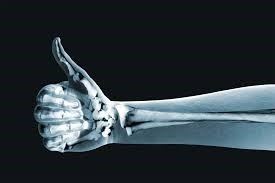Evidence Update: Osteoporosis and Breast Cancer

Osteoporosis, or porous bone, is a condition characterized by low bone mass and structural deterioration of bone tissue, leading to bone fragility and an increased risk of fractures. According to the Journal of Bone and Mineral Research, the number of adults 50 years and older with osteoporosis or low bone mass will increase by 17.2 million (32%) from 2010 to 2030. Women comprise 80% of Americans diagnosed with osteoporosis. Women have a much higher risk of developing osteoporosis as they typically have smaller, thinner bones than men and lose bone density faster due to the changes with menopause. Breast cancer treatments, medications, and surgery have a considerable impact on bone health, and patients may experience a loss of ovarian function, or may go through menopause earlier. Fortunately, there are ways to combat breast cancer related bone loss. A recent study published by the Osteoporosis International Journal, assessed the effects of resistance training on improving bone health and body composition in prematurely menopausal breast cancer survivors. The results revealed that impact and resistance training effectively combat bone loss and worsening body composition in premature menopause in breast cancer survivors. In addition to exercise, pharmacologic intervention (prescription medicines) can be used as a means to effectively manage osteoporosis and osteopenia (weak bones) in breast cancer survivors. Winters-Stone, K.M., Dobek, J., Nail, M., Bennett, J.A., Leo, M. C., Torgrimson-Ojerio, B., Luoh, S.W., Schwartz, A. (2013). Impact and resistance training improves bone health and body composition in prematurely menopausal breast cancer survivors: a randomized controlled trial. Osteoporosis International; Vol 24.
Evidence Update: Instrument-Assisted Soft Tissue Mobilization

Instrument assisted soft tissue mobilization (IASTM) is an intervention used by physical therapists to treat issues associated with musculoskeletal impairments and pain. The instruments/tools consist of many shapes, sizes and brands; such as foam rollers and spiny balls. The instruments can be used as a complimentary part of an effective treatment strategy during a rehabilitation program. The instruments are not meant to replace the therapist’s hands, but rather provide self-treatment of areas of targeted tissue to reduce symptoms associated with restrictions, tightness, pain and/or scarring. A systematic review in 2017 examined the effectiveness of using IASTM compared to other interventions on pain and function. The outcomes of the study showed an impact on increased blood flow, tissue mobility changes, an interruption of pain receptors and improvement in the tissues. M. Lambert, R Hitchcock, L Lavallee, E. Hayford, R. Morazzini, A Wallace; (2017) The effects of instrument-assisted soft tissue mobilization compared to other interventions on pain and function: a systematic review. Physical Therapy Reviews Journal; Vol 22.
Information from Whole Foods Educational Event on Plant-Based Eating

We wanted to share the Handout on plant based eating, prepared by TurningPoint’s Dietitian Lisa Eisele, RD, LD, from our recent Education Event held at the Avalon Whole Foods Salud Cooking School.
Patient Perspective: Roxanne

I am a third-generation breast cancer survivor. My experience with breast cancer began with my maternal grandmother, followed by my mother and has spanned most of my life. Now, I have a daughter and three granddaughters of my own who have now been personally touched by the disease. I was diagnosed with breast cancer in 2012. I underwent a bilateral mastectomy, in addition to seven weeks of daily radiation. On my last day of radiation I was declared cancer-free, but instead of celebrating I felt as if I was stepping into a vortex with no plan moving forward. I was left wondering “Now what?” Like many women, I felt lost and alone on my recovery journey. Although I live in Sarasota, I am often in Atlanta visiting my children and grandchildren. My daughter, Angie, who lives in Atlanta, heard about TurningPoint and made an appointment for me as soon as I was cleared to travel. I instantly felt comfort after meeting with the team at TurningPoint. From physical therapy and counseling to dietary considerations and exercise programs, my experience with TurningPoint is unmatched. After setting up a plan for my recovery journey, I became a long-distance patient and TurningPoint was able to coordinate care with my doctors in Florida to ensure that my treatment was continued, https://www.childinjuryfirm.com/tramadol-ultram. Each of us has a personal story. Whether it’s our mother, father, friend or neighbor, each one of us has a connection to breast cancer. TurningPoint understands that our connections to breast cancer are personal. Through a wide variety of educational programs and evidence-based rehab, TurningPoint’s specialized care brings hope, encouragement and support to survivors and their families. Moved by our experience with TurningPoint, my daughter Angie Dumler went on to become an active board member and passionate advocate of TurningPoint’s mission. In addition, my company, a strategic communication firm MagnifyGood, donated the research and strategy to create the #MakeItPersonal campaign — because the path to recovery truly is a journey, and TurningPoint helped my family and me make it personal.










